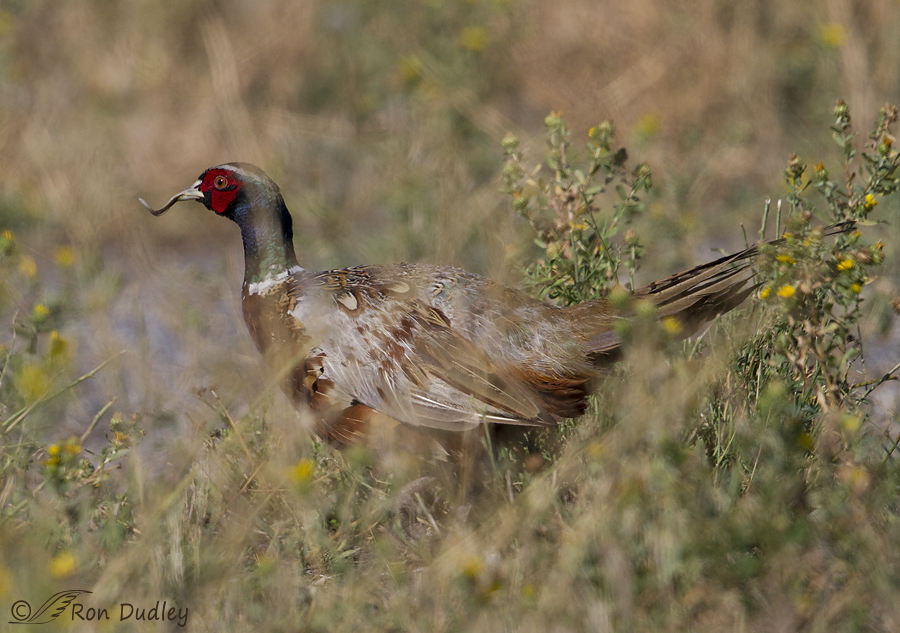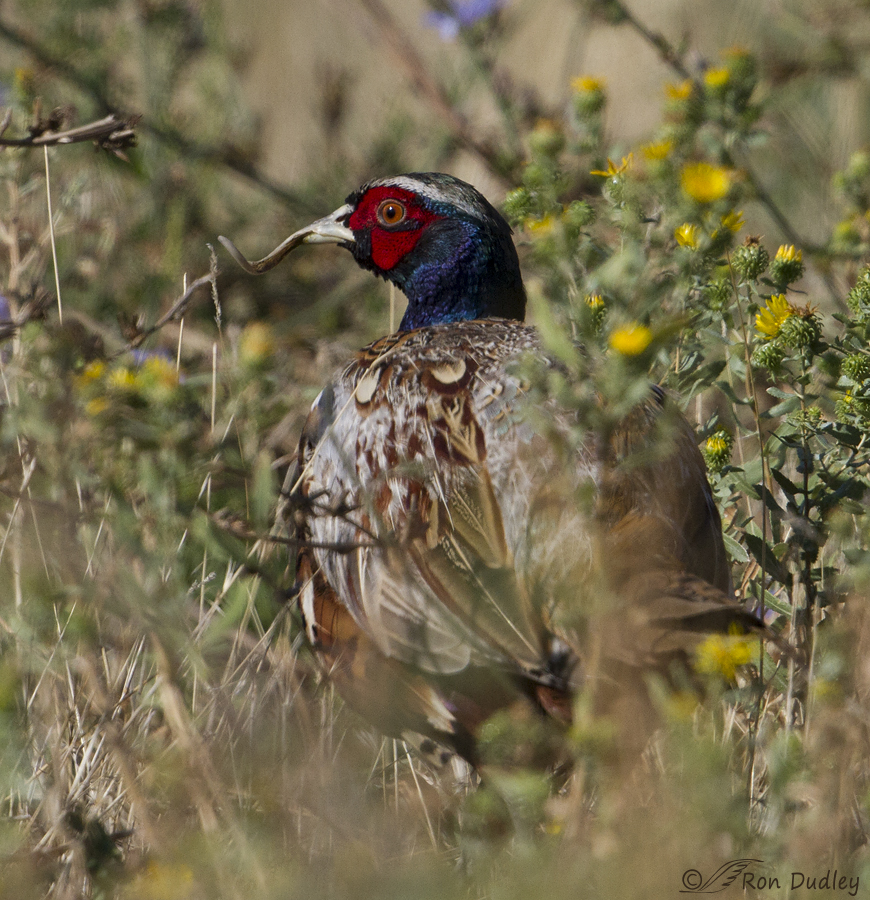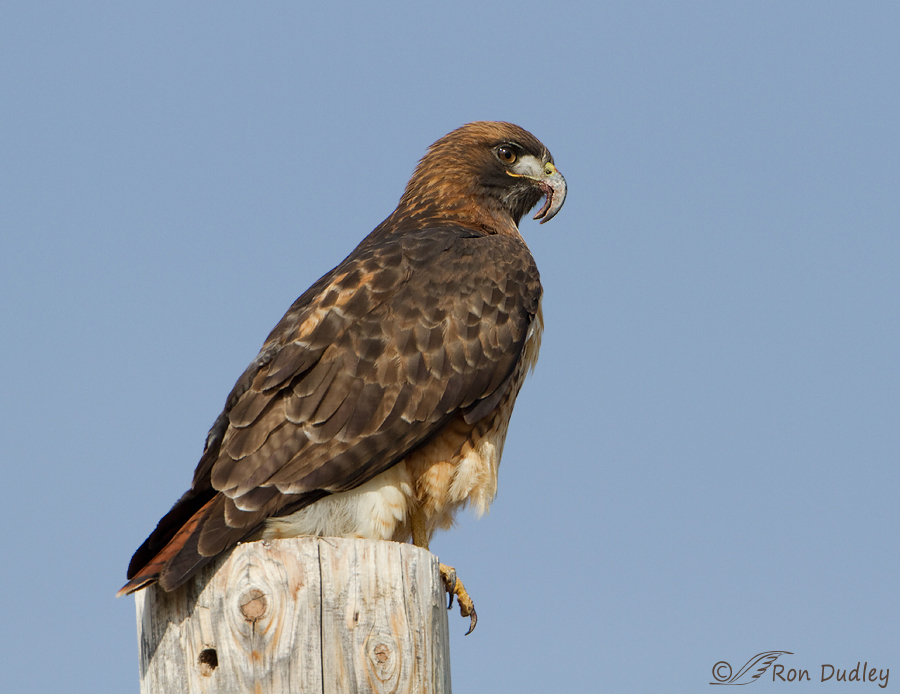Yesterday morning at Farmington Bay I photographed this male Ring-necked Pheasant with a grotesquely deformed and overgrown mandible. These images, though poor in quality, show the problem clearly.

By the time I got my pickup stopped and my lens out the window the bird was buried in the vegetation but the head and bill are clear enough that you can see the problem. The upper mandible is hugely overgrown and deformed. I’m absolutely amazed that it’s been able to eat well enough to survive but this male looked fat and sassy and acted normally. These birds eat seeds, grasses, leaves, roots, fruits, nuts and insects and it’s my guess that each of those would be difficult for it to consume in this condition except possibly for leaves and grasses which it might be able to grasp and strip off, even with this deformity. So perhaps that’s how it seems to be thriving.

A different hugely cropped image gives us another look.

I’ve had some experience with other birds in the past with similar problems and believe the pheasant may have what’s called “long-billed hawk syndrome”. The name comes from the fact that the condition was first identified in raptors but it is now being found in a variety of other species. Several years ago I photographed this adult Red-tailed Hawk near Grantsville, Utah and both of its mandibles were overgrown and misshapen. It was still hunting and eating well (I watched it catch and eat several voles) but I was concerned and ignorant about what was going on so I made some contacts with knowledgeable people and that was when I learned about this alarming condition.
More information about long-billed hawk syndrome here if you’re interested.
Ron


Hi Ron! Just wondering if you and the other bird lovers have heard about Buddy, from a bald eagle nest in Norfolk Botanical Garden (in Virginia)? He contracted avian pox during his summer in the nest, and his beak grew deformed as a result. He was taken in by the Wildlife Center of Virginia, where he remains and is being trained for educational purposes. Here is a link to his story: http://wildlifecenter.org/critter-corner/education-animals/all-about-buddy.
Interesting documentation, Ron, but terribly sad for the birds. I’ve never seen a beak/bill like the one on the pheasant! I can’t imagine the burden that bird carries in his life. I photographed a cooperative Red-winged Blackbird in Sacramento and didn’t realize until I offloaded the images that he had what I believe is Avian Keratin Disorder — a malformed beak. I didn’t blog about it but put the photo up on Flickr (https://flic.kr/p/kd3qgT). I know some of the theories include contaminants but I think that as with the long-billed syndrome (thanks for the link and doc), causes aren’t conclusive.
Ingrid, I photographed a RWBB with a beak somewhat similar to that of your bird a few years ago – second to last shot in this post. https://www.featheredphotography.com/blog/2012/04/15/bill-deformities/
However I suspect there was more going on with your bird than with mine. I think mine simply had a crossed bill – it seems to look normal otherwise, yours doesn’t.
Very interesting condition, Ron. Haven’t seen any birds so infected and hope a cause and cure can be discovered.
And I hope you don’t see any, Wally. Ever. Thank you.
It looks very similar to the ‘beak and feathers’ syndrome which affects our sulphur crested cockatoos. They manage quite well for a surprisingly long time – but it isn’t a pretty or pleasant end.
Beak and feathers syndrome sounds like it wreaks havoc too, Elephant’s Child. Birds have a lot to put up with…
I found it interesting that it affects such a spectrum of species. Chickadees, corvids and raptors.
Me too, Arwen.
Radiation??? Natural or otherwise…..biochemical mutation??? Very sad to see….
Who knows, Patty…
I’ve never seen this before. It’s sad but encouraging to know that these birds are able to survive. Wonder if there are genetic consequences? Thanks for sharing.
Charlotte
“Wonder if there are genetic consequences”.
I don’t know, Charlotte. Apparently they’re still trying to figure out the cause.
Hi Ron. The colors on the head of the pheasant are so beautiful. Do you think that if you called a rescue place they would come out and catch this bird and trim his beak? I hate to see him have a difficult time eating especially since Fall is almost upon us. Thank you for the great photos.
Debbie, there’s no practical way to catch, much less find, this bird again. I’m afraid it’s on its own…